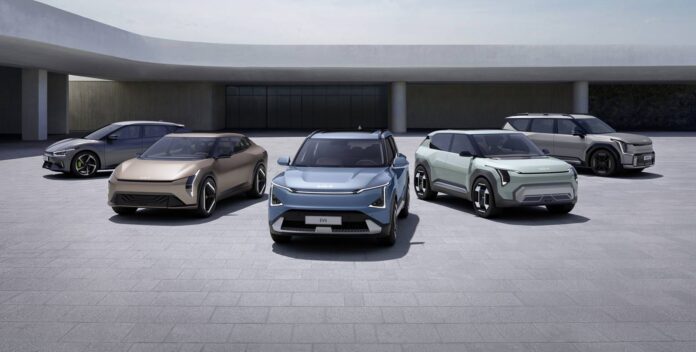Kia Corporation provided a preview of its EV direction with today’s unveiling of three new models at the brand’s annual Kia EV Day in Korea. Having successfully established itself as an electric vehicle brand with the launch of the EV6 and EV9, it will now broaden its model line-up to offer customers more options and access to EVs.
The new models are the EV5 (compact SUV for millennial families) which is production ready, and the Concept EV3 (compact SUV) and Concept EV4 (sedan).
While the EV6 and EV9 are in the US$30,000 to US$80,000 (RM140,00 – RM370,000) price range, the company introduce smaller EVs like the EV5, EV4, and EV3 with prices ranging from US$35,000 to US$50,000 (RM165,000 – RM236,000), to accelerate the widespread adoption of EVs.
In emerging markets with slower EV adoption rates, the initial launch will focus on the EV6 and EV9, with subsequent releases of the smaller models. This approach aims to diversify product offerings and cater to various customer preferences.
EV5
The EV5 will be the third dedicated battery electric vehicle in Kia’s line-up, built on the Hyundai Motor Group’s dedicated EV platform. Production of the EV5 will take place in both China and Korea.

The powertrains will have battery capacities of 64 kWh and 88 kWh with 160 kW motors at the front. A long-range AWD model will have a 70 kW motor at the rear axle as well. Driving range, depending on powertrain specifications, will range from 530 kms to 720 kms. Fast-charging capability will allow recharging from 30% to 80% capacity in a claimed 27 minutes.
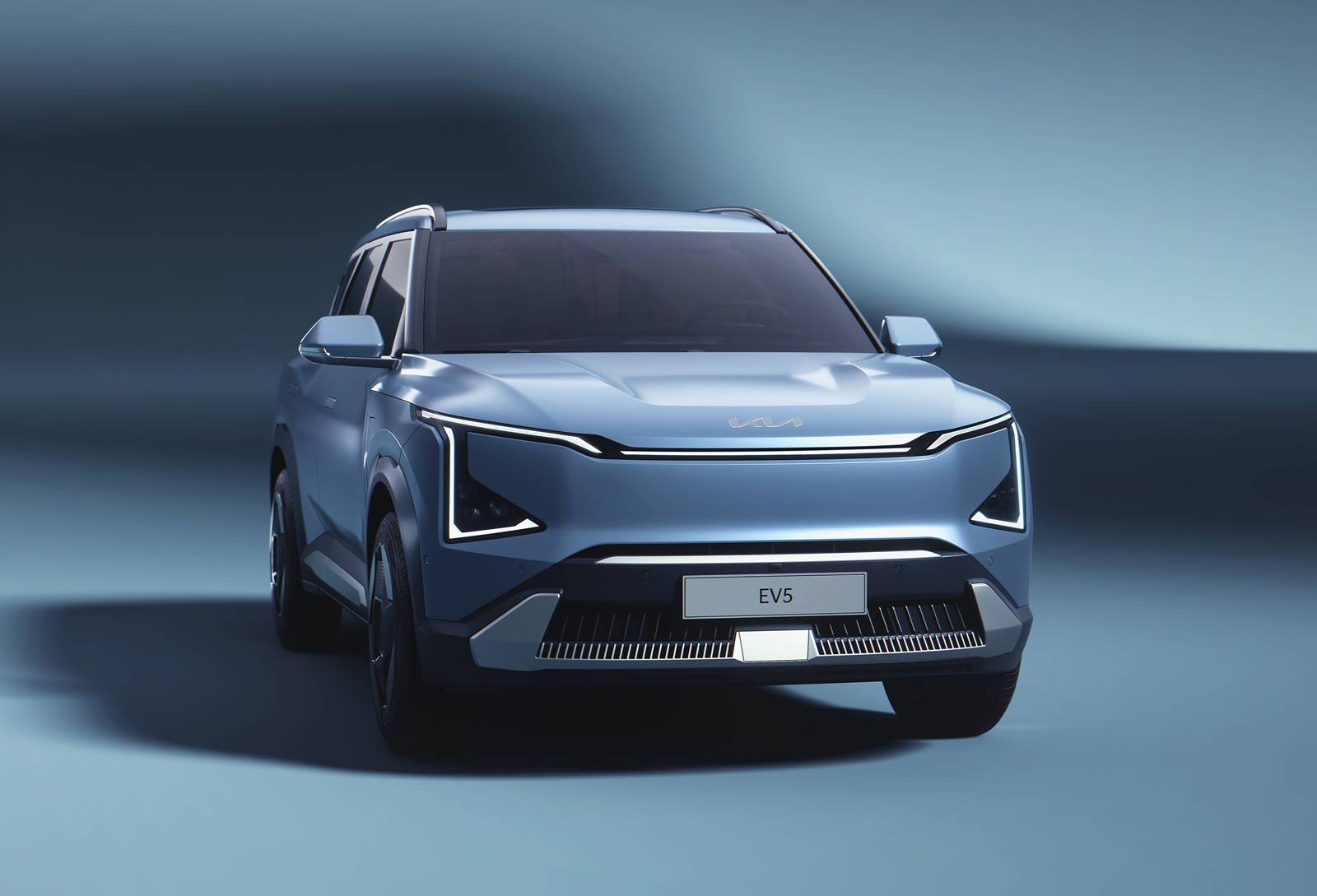
The EV5’s spacious, light, well-ventilated cabin will be equipped with advanced infotainment and connectivity technology that enhances efficiency and convenience, while enabling occupants to remain safely engaged with the digital world as they travel.

Its Navigation Cockpit infotainment system is part of the Panoramic Wide Display consisting of a 12.3-inch instrument panel and 12.3-inch infotainment system, along with a 5-inch climate control display.

Throughout the cabin, physical buttons are kept to a minimum. Operation of all the systems can be done with 4 hard keys instead of 17 buttons with a conventional approach. The brand’s new Unified Graphical User Interface (GUI) is applied between the audio-visual, navigation, and telematics screens, and ensures enhanced information display consistency. The seamless flow of information is further augmented by an optional HUD on the windscreen.
The EV5 will have an interior that completely reimagines interior space. Drawing additional inspiration from the larger EV9 SUV, it offers an expansive space that is closer in concept and execution to a home lounge than a traditional car cabin. Besides multiple adjustments and seat layouts, it will also be possible to transform the rear of the vehicle into a bedroom, thanks to the 0-degree, full-flat folding second-row camping seat.

“The Kia EV5 is not just the next addition to our rapidly expanding EV line-up, but also the embodiment of how we will accelerate the EV revolution. For us, it is the perfect representation of both our future EV strategy and our commitment to accelerating the worldwide transition to EVs,” said Spencer Cho, Head of Global Business Planning Sub-Division.
Concept EV3
The Concept EV3 represents the brand’s vision for an electric compact CUV with the technology, practicality and design of the flagship EV9. The design treatment of the cabin, with the windscreen pushed forward and the long sloping roofline, creates a unique silhouette.
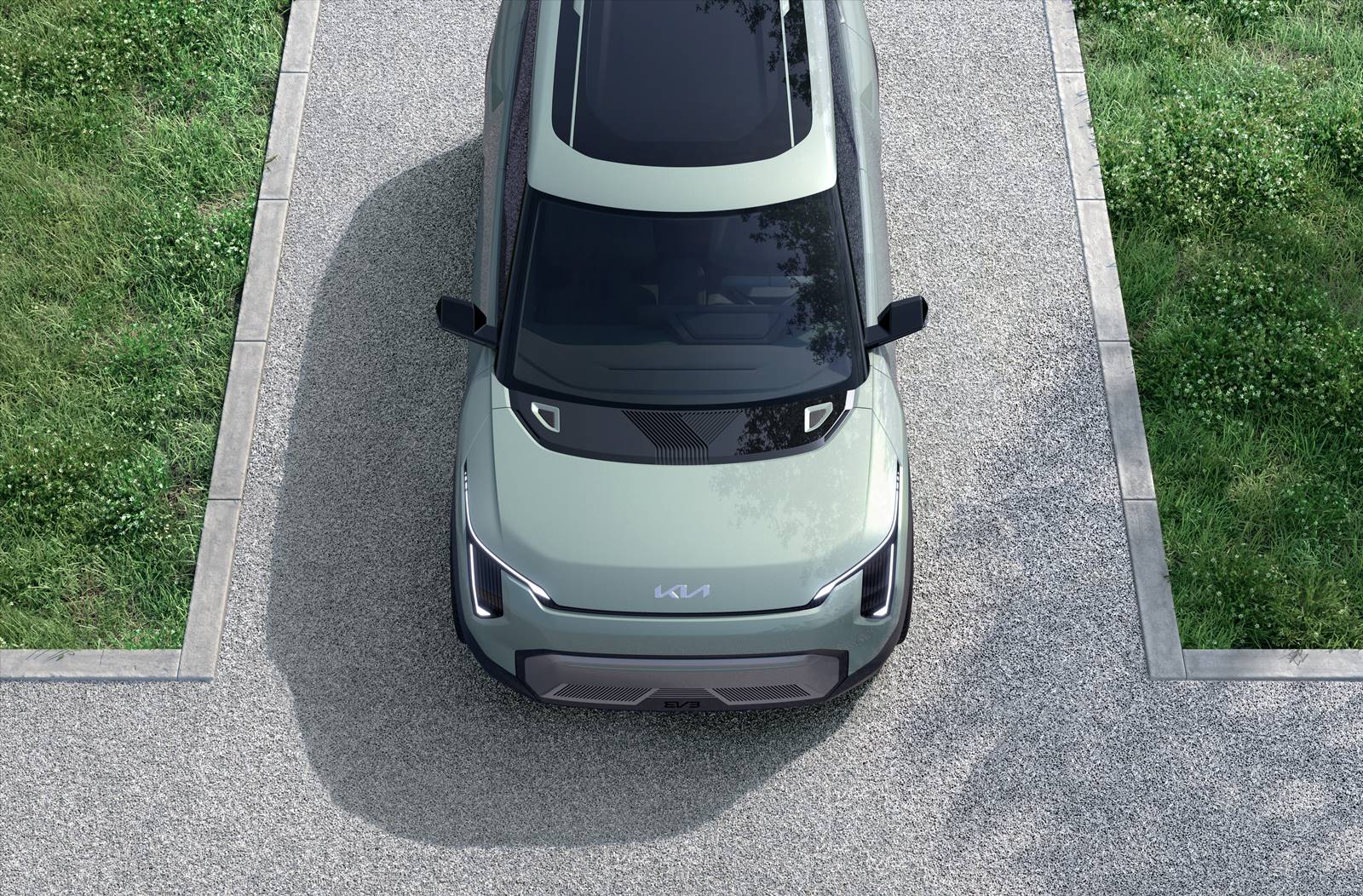
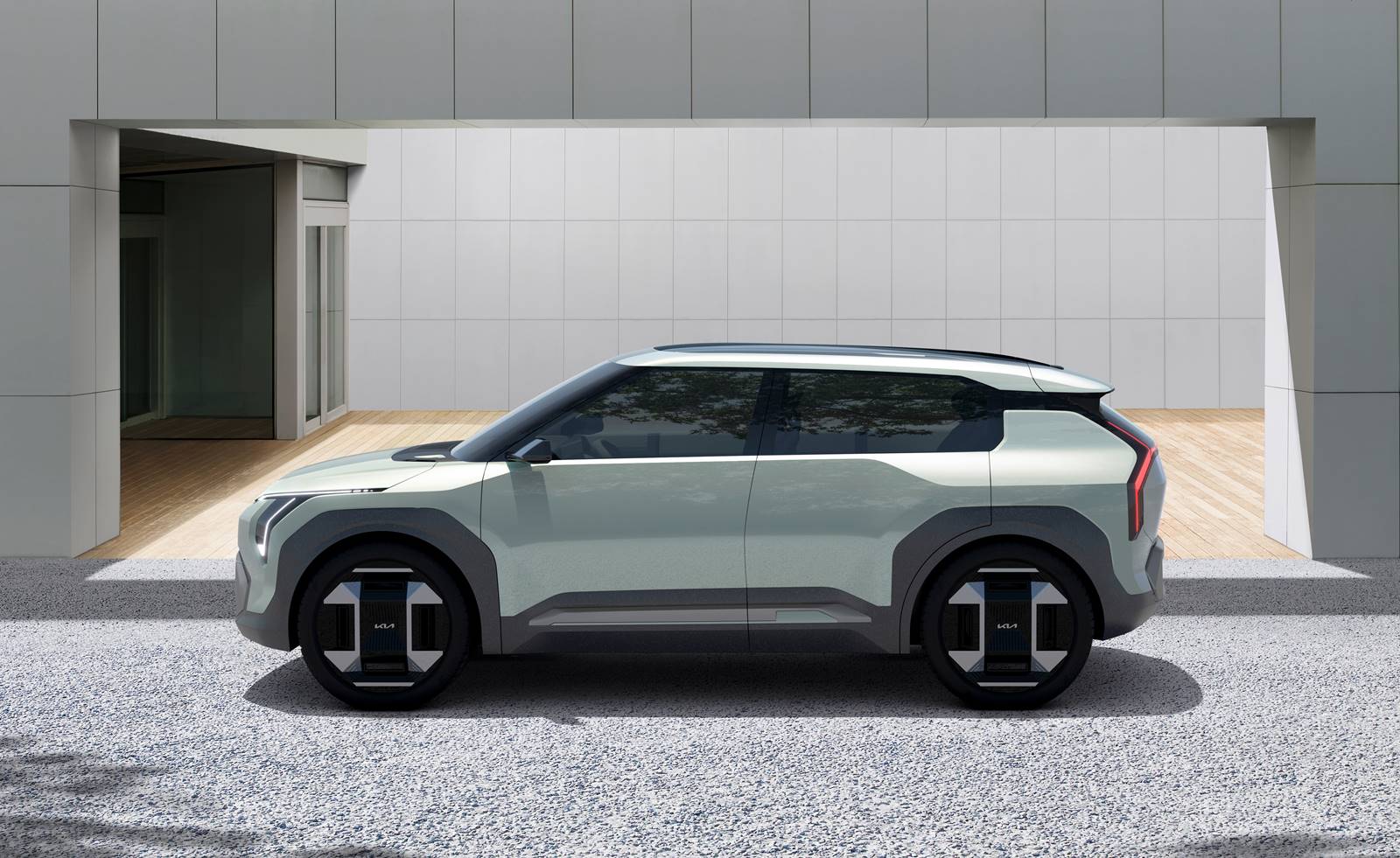
The robust architecture of the squared wheel arches, cut with asymmetrical angles, results in an unexpected logic and a strong impression. This, in turn, is contrasted by the wrap-around windscreen and disconnected C pillar, which link the glasshouse surfaces and give the roof a floating effect.

Inside, the Concept EV3 blends practicality with transformative cabin ambience and design. It is a space that provides an environment which promotes emotional wellbeing. Enhanced by soft mood lighting, the compelling, ultra-clean shape and surface of the dashboard, crafted through exquisitely refined character lines, creates an expansive visual sense to offer up the possibility of boundless opportunities on every journey.

Advanced ergonomic seat design and environmentally friendly materials, in keeping with the brand’s ethos of achieving sustainability at scale, combine with mini tables that rotate in length, position, and angle.
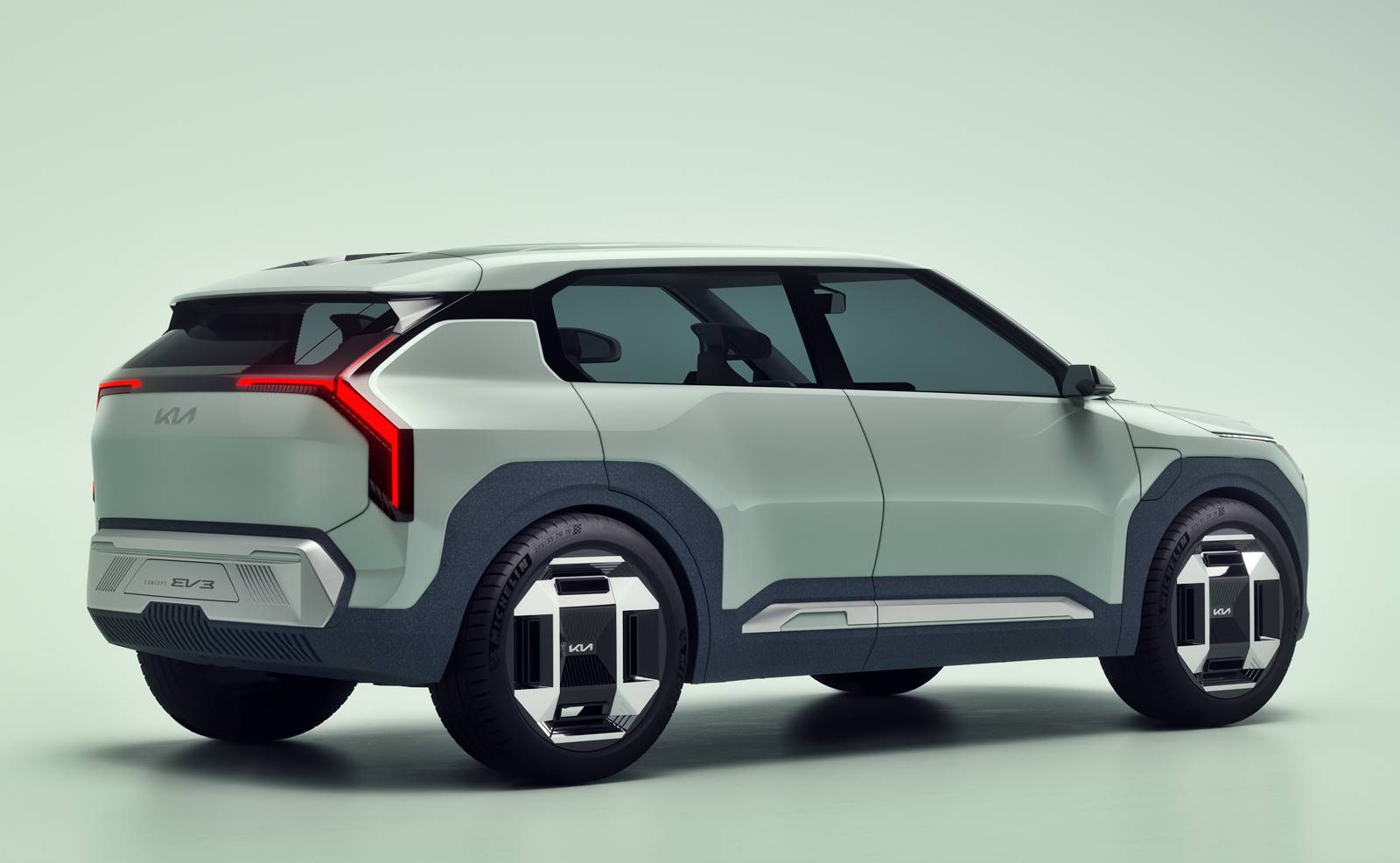
In conjunction with the movement of the seats, the tables support 4 experience-enhancing modes – Focus, Social, Refreshing and Storage. The folding bench-type rear seat is equally flexible and can be effortlessly folded upward, allowing for storing bulky luggage such as electric scooters and bicycles.
Concept EV4
The Concept EV4 is said to redefine the essence of the EV sedan, but while its 4-door form might suggest it should be categorized as a sedan, the designers have given it potent and impactful lines so it is not ‘just another sedan’.


The geometric diagonal character lines and rich yet technical surfaces of the Concept EV4 represent a new value, approach, customer experience, and typology. Aspects such as the evocative sleek low nose, the elongated, dynamic long-tail silhouette, and the technical roof spoiler – all attributes reminiscent of sports and racing cars – suggest the EV4’s status as an entirely new type of EV sedan.

Featuring a wide, imposing stance, with headlamps located vertically at the extreme outer edges of the bonnet and front bumper, the model further symbolizes the brand’s determination to push boundaries and accelerate the EV Revolution.
The interior has a sleek and spacious horizontal layout, incorporating stylish design elements that prioritize the driver’s experience without obstructing their view. To achieve this, Kia’s designers have placed an air-conditioning control panel that can be neatly stored in the centre console when not in use and applied pin-style air vents that offer the flexibility to change patterns.
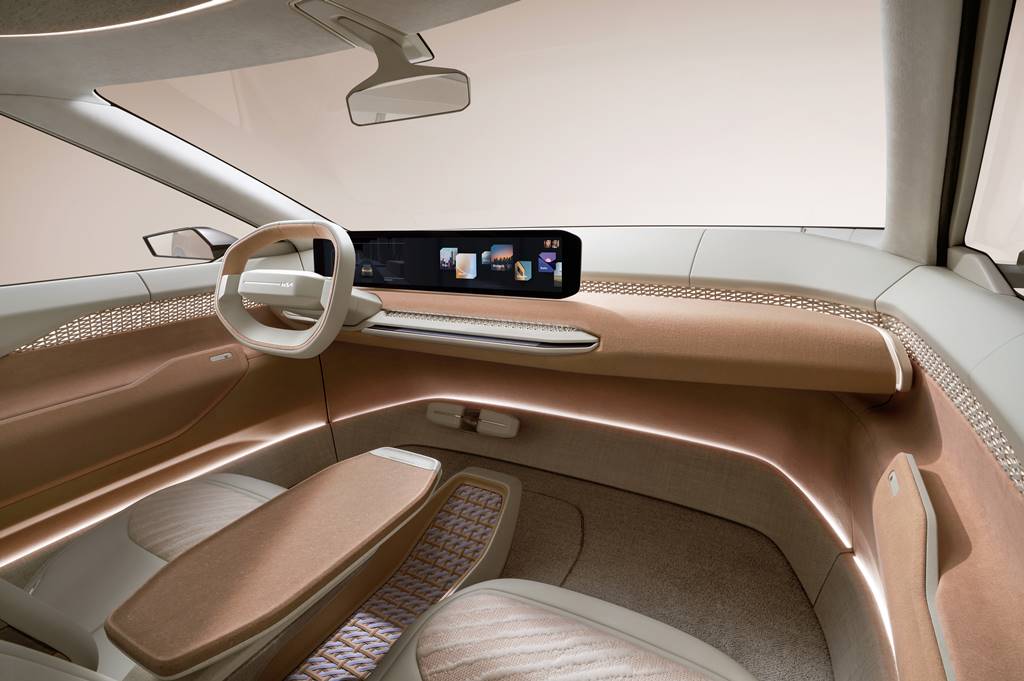
The Concept EV4 comes with a new ‘Mind Modes’ feature that adjusts ambient lighting and animated ventilation patterns. In ‘Perform’ mode, the driver is presented with all the information they require to perform at their optimum and get the most out of their day. In contrast, ‘Serenity’ mode offers a range of digital graphics to create a more relaxed ambience for reflection and restoration.
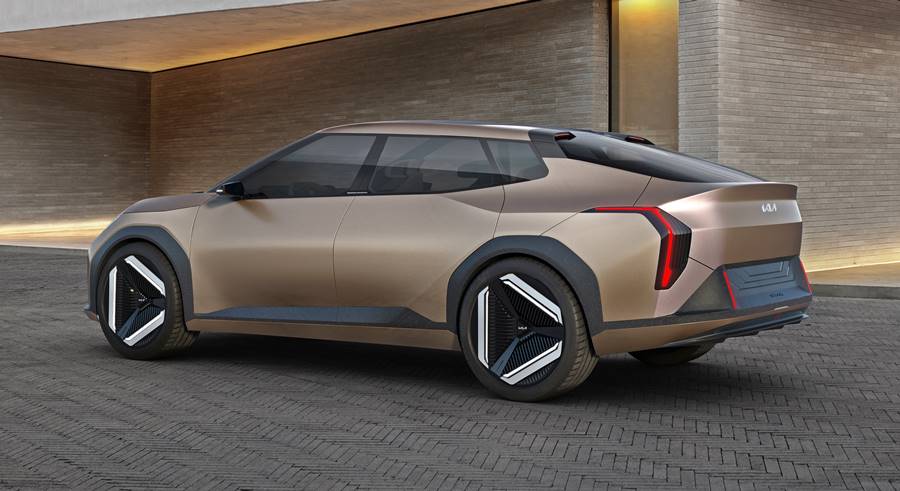
Efforts are also underway to establish a reliable system for EV production and battery supply, with the brand’s goal of expanding its global EV production facilities to a total of 8 by 2025. These facilities will encompass research, development, production, and supply, with Korea serving as the central hub.
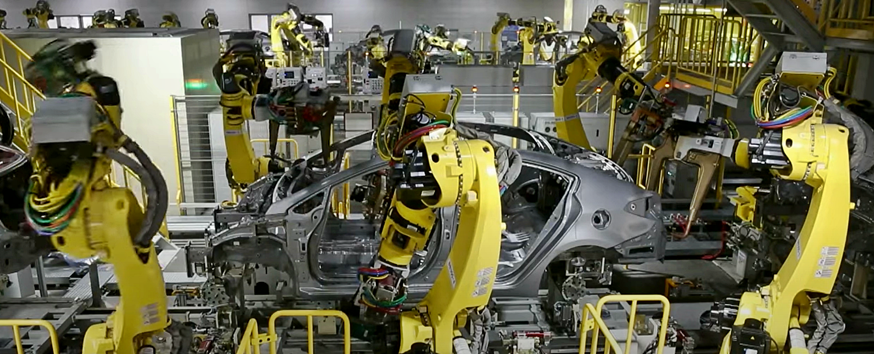
In Europe, it will focus on the production of small and medium-sized EVs while, in China, the emphasis will be on mid to large-sized EVs. Strategically designed EV models tailored for emerging markets will be produced in India. Kia also plans to introduce a diverse range of EV models in North America, in response to the Inflation Reduction Act.
The brand’s goal is to achieve an annual sales target of one million electric vehicles by 2026 and increase it to 1.6 million units per year by 2030, driven by the products and initiatives revealed today.
